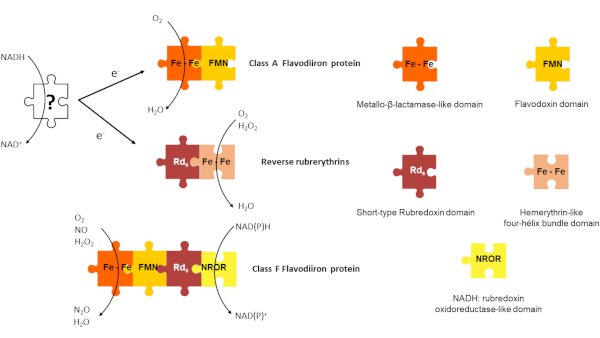#How bacteria survive low oxygen environments

“#How bacteria survive low oxygen environments”
by Instituto de Tecnologia Química e Biológica António Xavier da Universidade NOVA de Lisboa - ITQB NOV </p><div>
<div class="article-gallery lightGallery">
<div data-thumb="https://scx1.b-cdn.net/csz/news/tmb/2020/howbacterias.jpg" data-src="https://scx2.b-cdn.net/gfx/news/2020/howbacterias.jpg" data-sub-html=""Clostridioides difficile’s tools to tolerate low oxygen tensions.". Credit: Instituto de Tecnologia Química e Biológica António Xavier da Universidade NOVA de Lisboa - ITQB NOV">
<figure class="article-img"><img src="https://scx1.b-cdn.net/csz/news/800/2020/howbacterias.jpg" alt="How bacteria survive low oxygen environments" title=""Clostridioides difficile’s tools to tolerate low oxygen tensions.". Credit: Instituto de Tecnologia Química e Biológica António Xavier da Universidade NOVA de Lisboa - ITQB NOV" width="600" height="338"/><figcaption class="text-darken text-low-up text-truncate-js text-truncate mt-3">
"Clostridioides difficile’s tools to tolerate low oxygen tensions.". Credit: Instituto de Tecnologia Química e Biológica António Xavier da Universidade NOVA de Lisboa - ITQB NOV
</figcaption></figure></div>
Researchers from ITQB NOVA, in collaboration with the Institut Pasteur in Paris, have shed light on the mechanisms that allow Clostridioides difficile, a pathogen that can only grow in oxygen-free environments, to be able to survive low oxygen levels. C. difficile is a major cause of intestinal problems associated with the use of antibiotics, causing an estimated number of 124k cases per year in the EU, costing on average 5k€ per patient, as a direct consequence of healthcare-associated contagion. Particularly pathogenic varieties of C. difficile are an important cause of high prevalence infections in health care environments and will keep hindering the ideal use of antimicrobial therapy unless these mechanisms are understood more rapidly than these organisms evolve.
A healthy human gut is generally regarded as mainly free of oxygen but, in reality, there are varying levels of oxygen along the gastrointestinal tract, which poses a challenge to anaerobic organisms of the human microbiome, such as C. difficile. In organisms similar to this bacterium, two families of enzymes, flavodiiron proteins and rubrerythrins, have been shown to play an important role in protection against oxidative stress.
“Little was known about the actual proteins involved in the ability of C. difficile to tolerate O2, and our studies have demonstrated a key role of flavodiiron proteins and rubrerythrins proteins in providing C. difficile with the ability to grow in conditions such as those encountered in the colon”, says Miguel Teixeira, head of the Functional Biochemistry of Metalloenzymes Lab.
This finding led the ITQB NOVA team, along with the I. Martin- Verstreaet Lab at Institut Pasteur, to develop a comprehensive study on four of these types of proteins. It had been previously established that a flavodiiron protein is able to reduce both oxygen and hydrogen peroxide, and this study confirmed the same for two types of rubrerythrins proteins. In a particular mutant strain of C. difficile, inactivation of both rubrerythrins led to the bacteria not growing at an oxygen level above 0.1%, a significant difference from the bacteria’s usual resistance, of up to 0.4% O2.
By demonstrating that flavodiiron and reverse rubrerythrin proteins are essential in C. difficile‘s ability to tolerate damage to its cells in the presence of oxygen, the two teams of researchers have managed a significant step towards better understanding its mechanisms of resistance. The researchers will now move on to explore other survival mechanisms of these bacteria.
<hr class="mb-4"/><div class="article-main__more p-4">
<strong>More information:</strong>
Nicolas Kint et al, How the Anaerobic Enteropathogen Clostridioides difficile Tolerates Low O2 Tensions, <i>mBio</i> (2020). <a rel="nofollow noopener noreferrer" target="_blank" data-doi="1" href="http://dx.doi.org/10.1128/mBio.01559-20">DOI: 10.1128/mBio.01559-20</a>
</div>
<p>
Provided by
Instituto de Tecnologia Química e Biológica António Xavier da Universidade NOVA de Lisboa - ITQB NOV
<!-- print only -->
<div class="d-none d-print-block">
<strong>Citation</strong>:
How bacteria survive low oxygen environments (2020, November 2)
retrieved 2 November 2020
from https://phys.org/news/2020-11-bacteria-survive-oxygen-environments.html
This document is subject to copyright. Apart from any fair dealing for the purpose of private study or research, no
part may be reproduced without the written permission. The content is provided for information purposes only.
</div>
</div><script id="facebook-jssdk" async="" src="https://connect.facebook.net/en_US/sdk.js"></script>
For forums sites go to Forum.BuradaBiliyorum.Com
If you want to read more Like this articles, you can visit our Science category.



